2018 Jeep Wrangler: Everything You Want to Know
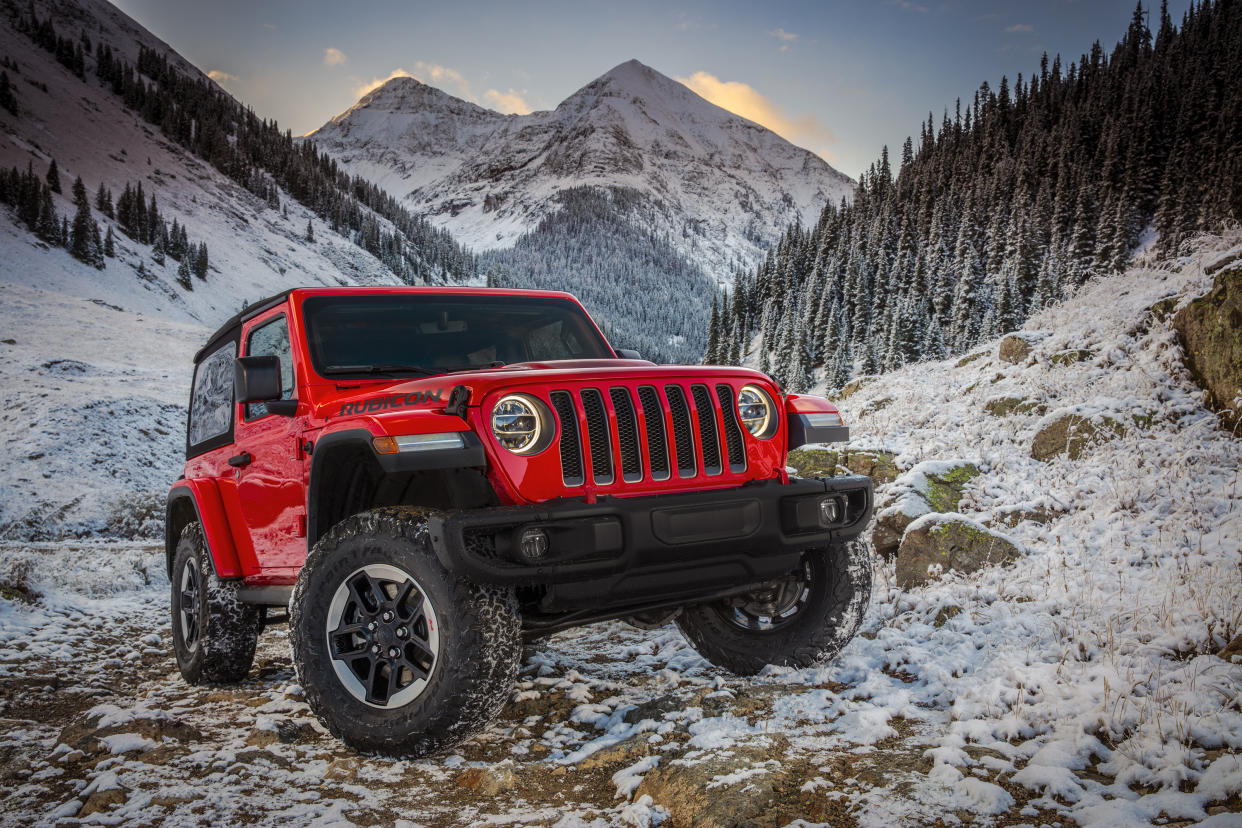
Jeep faced a huge challenge in redesigning the Wrangler. The JK-generation rig, built from model year 2007 to the present, has been the most successful Wrangler by a huge margin. The addition of the four-door model more than doubled sales, making the rugged, open-top off-roader into a viable family vehicle.
But while most Wrangler owners will never set a tire on the Rubicon Trail, every Jeep aficionado expects a new Wrangler to offer more off-road capability than the previous generation. Simultaneously, Jeep had to make the new Wrangler more comfortable on pavement, safer, and more fuel efficient - objectives that make off-roaders cringe.
I can't tell you what the new Wrangler is like to drive, at least not yet. But I can tell you a whole bunch about how it's changed, from the huge alterations to the tiny new features. Here's everything you ever hoped to learn about the all-new, JL-generation Jeep Wrangler.
Exterior Design
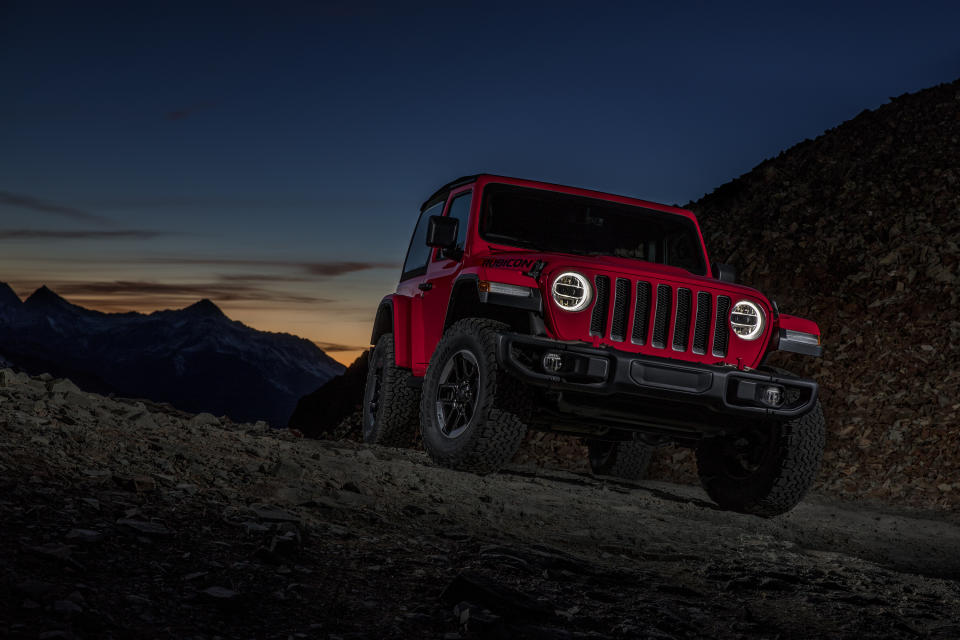
The new Wrangler grows slightly compared to the JK-generation model: The two-door is 2.8 inches longer, with a 1.4-inch-longer wheelbase; the four-door grows 3.8 and 2.4 inches, respectively. All models gain 2.5 inches of track width, and overall body width grows by 0.2 inches.
But parked next to a JK, the new JL looks more compact. It's a trick of the eye - Jeep's designers made the headlights larger and the fender flares smaller to hide some of the growth. The new, trapezoidal grille and sculpted hood are directly inspired by the CJ-5 - especially in the way the headlights notch into the outer grille slots. The aluminum body, combined with an all-new, high-strength steel frame, helps the Wrangler shed up to 200 lbs compared to the previous model.
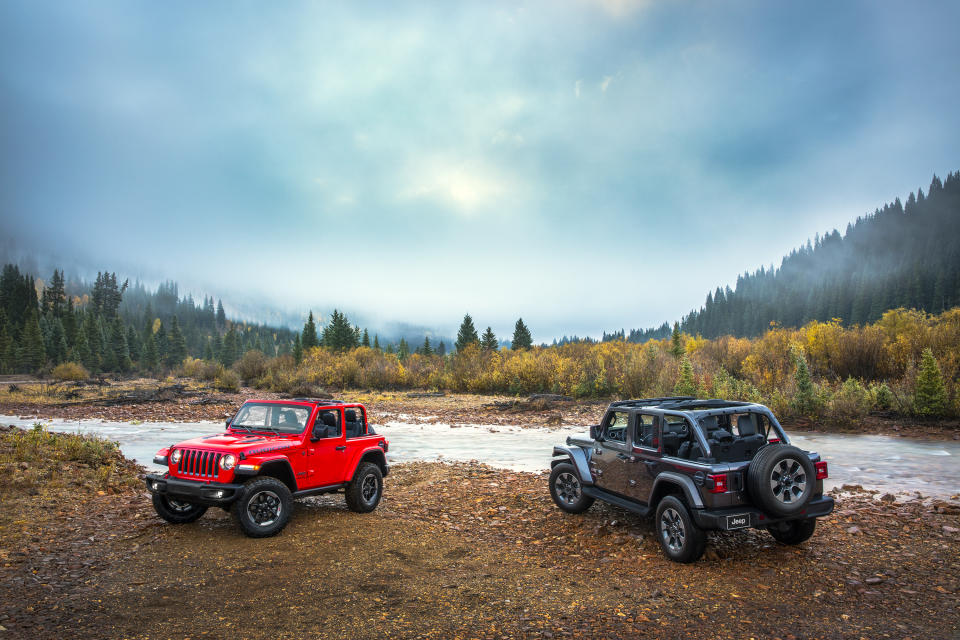
Sahara models get body-colored fender flares with matte black undersides to accentuate the size of the wheel well. Rubicon front fender flares sit two inches higher on the body compared to other models. The Rubicon also gets steel front and rear bumpers; the front has removable end-caps to improve approach angle, and can accept a Warn winch without modification. New 33-inch BF Goodrich All-Terrain T/A KO2 tires, the largest ever fit to a Jeep from the factory, give the Rubicon plenty of ground clearance. A Mopar two-inch suspension lift kit will let you fit 35s, no cutting, no rubbing.
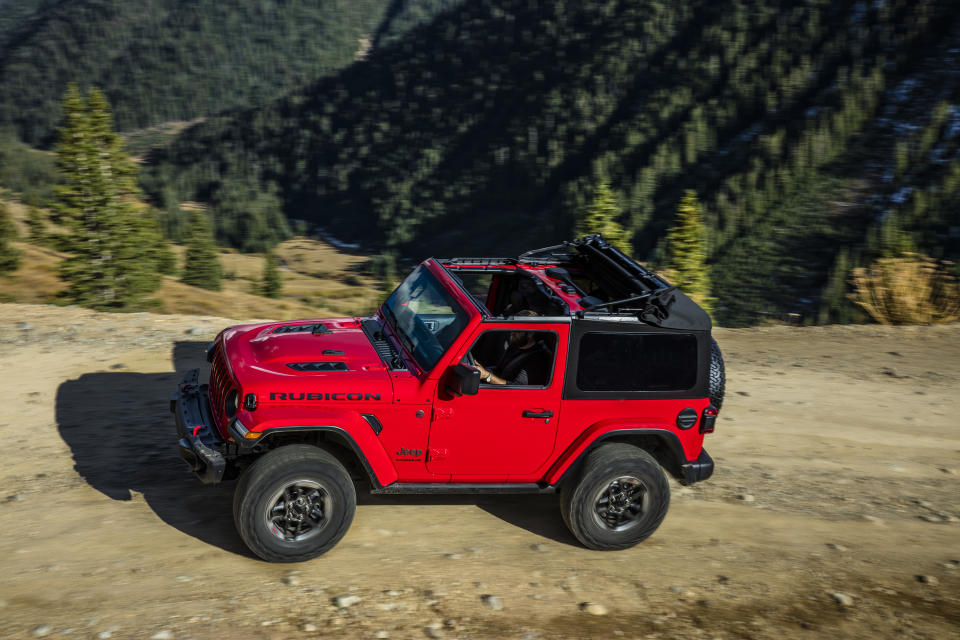
The new canvas folding top has been completely redesigned. There are no zippers on the soft top anymore; the side curtains attach to the body and rooftop by plastic tongue-in-groove sliders. Anyone who has wrestled with a Wrangler's zip top in the middle of a downpour will appreciate how much pain and anguish this switch will alleviate. A spring-loaded mechanism makes raising and lowering the roof a one-person job, even on four-door models. You can flop the front portion back, leave the roof on but remove the side and rear windows, or drop the whole thing for full-on open-air driving.
As always, the doors are removable. Aluminum construction makes them pounds lighter than before, and a handy new lift point carved into the underside of the arm rest makes it easier to hoist the doors off and on. Available "half doors" mimic the chopped-down units once available on TJs and YJs, and feature a cool looking porthole to give you a better view for off-roading.
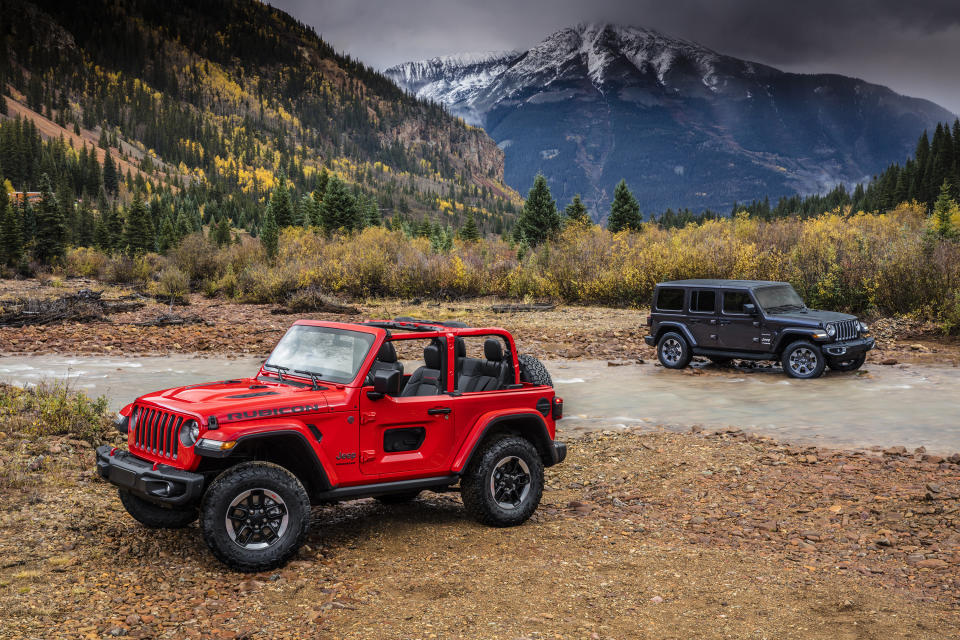

And yes, the windshield folds down. Every Wrangler has offered this feature, but on the previous generation model it was a real pain - 28 bolts to remove, followed by disassembling the entire front half of the roll bar and breaking paint. The new Wrangler has a full, permanent roll bar, with A-pillar tubes for the very first time. Folding the windshield only requires you to pop off the windshield wiper arms and undo four bolts, all of them on the inside where they won't get caked in mud and rust. The rear-view mirror and sun visors stay put on a permanent header bar, and all the tools needed to complete the operation come in the console.
The roll bar no longer has the traditional canvas wrap to match the interior color. Instead, the bars are painted body color, with plastic coping on the inner areas for head protection. At first I found this a little jarring, but it's easy to get used to.
A power-folding soft top, a Wrangler first, will be available on high-option four-door models. This roof features a long folding canvas sunroof to let you go open-air at a stoplight; the rear and side windows will pop off too. The Freedom Top three-piece hardtop is optional on all models, body-color on Rubicon and Sahara models, black on lower trim. All hard tops feature lighter panels for easier installation and removal.
Interior Design
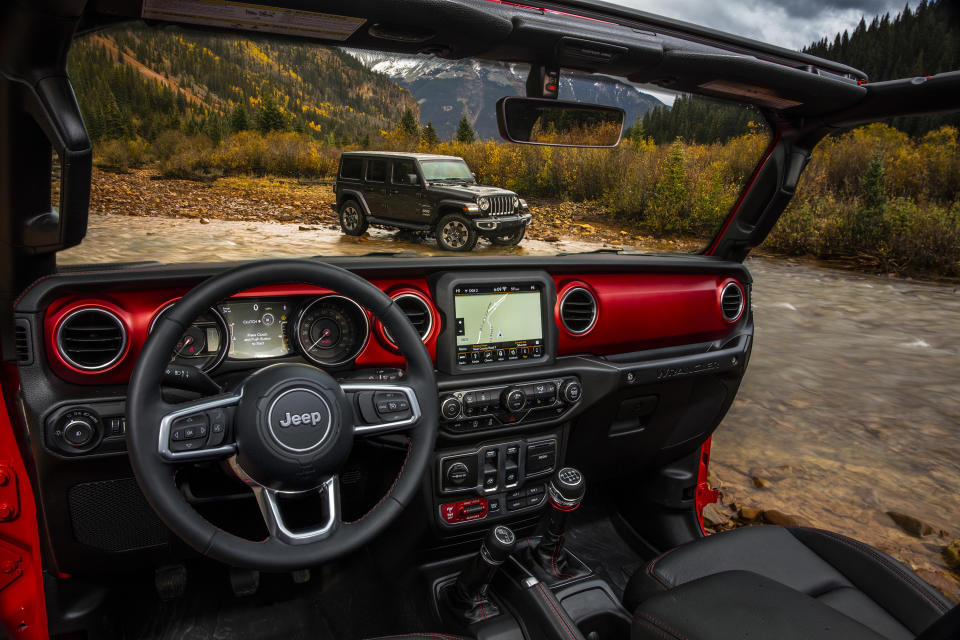
Inside is where Jeep made especially huge strides. Where the previous Wrangler felt chunky and plasticky, the new JL-generation's interior is decidedly upmarket, with push-button start and a standard 7-inch or optional 8.4-inch touchscreen. Don't worry: Jeep engineers assure me that, even after hours and hours in a roof-off rainstorm, that push-button will still fire up the engine. And yes, there are still drain plugs in the floor.
A new instrument panel features an optional 7-inch color LED display between the gauges, showing all the information and navigation pages you could want. For the first time, Sahara and Rubicon models offer a tilt/telescope steering wheel, heated as an option.
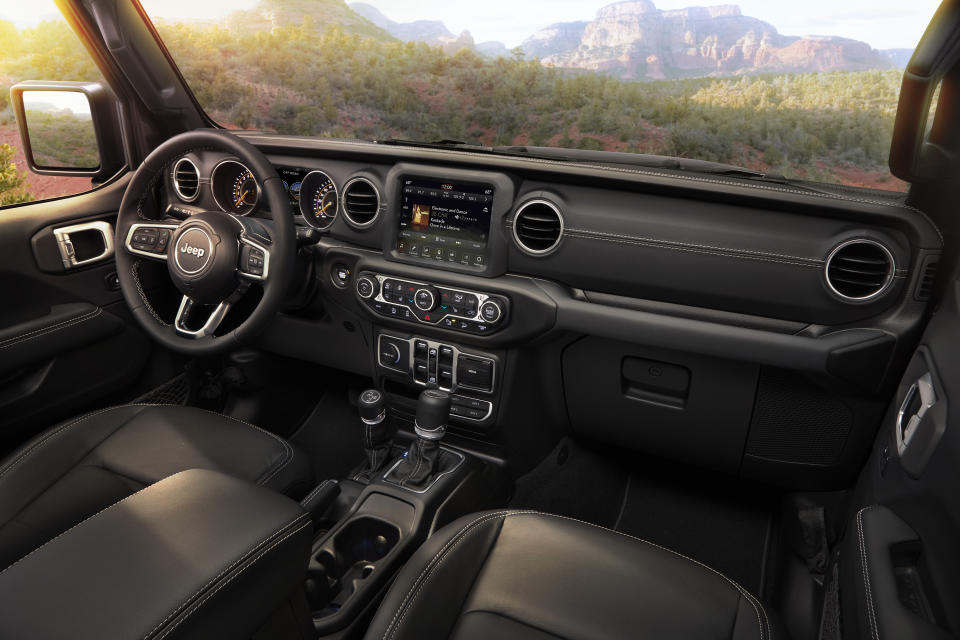
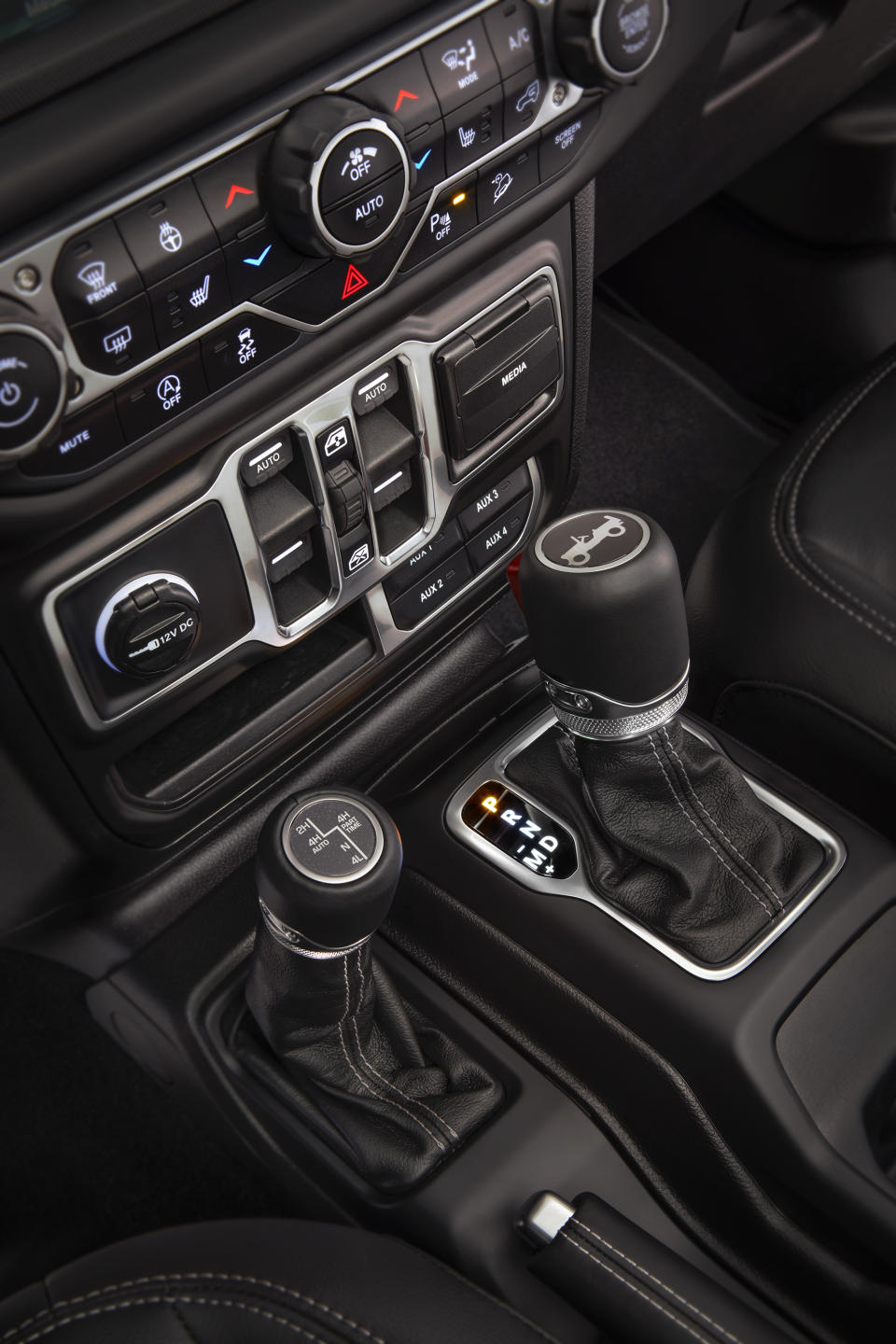
The center stack is where you'll really notice the difference. The outgoing Wrangler had a weird hump in the middle of the dash, a roughly four-inch protrusion that thrust rearward to accommodate the stereo and nav system. The new Wrangler's dash is as flat and shallow as the engineers could get it, making the interior feel open and airy.
A batch of four auxiliary switches just ahead of the shifter sits at the ready, built-in for the inevitable lights, compressors, winches, and other electronic accessories Wrangler fans are bound to bolt to their new rigs.
On four-door models, the rear seat has been moved rearward, with the seatback set to a less upright angle for a more comfortable seating position. Grab handles come out of the A- and B-pillars at such an angle that they don't impede outward vision, and every window is larger, with a lower beltline and repositioned spare tire to improve visibility. On hardtop models, the rear windscreen wiper motor has been relocated to sit behind the spare tire, opening up rearward vision even further.
Drivetrain
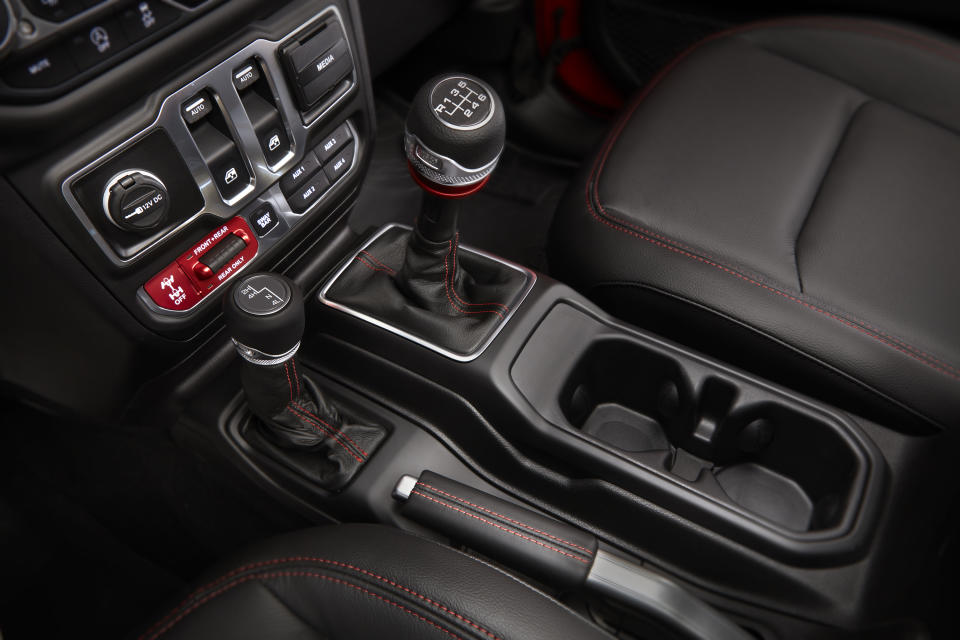
The base engine is still the 3.6-liter Pentastar V6, making 285 horsepower at 6400 rpm and 260 lb-ft of torque at 4800 rpm. The standard transmission is an all-new six-speed manual, now with a body-mounted, cable-actuated shifter that won't shake your hand at idle. The optional automatic is now an eight-speed TorqueFlight, similar to the one used in the Grand Cherokee.
A 2.0-liter turbocharged inline-four is the optional gasoline engine, making 270 horsepower at 5250 rpm and 295 lb-ft of torque at 3000 rpm. Sharing basic dimensions with the four-cylinder engine found in the Alfa Romeo Giulia Ti, this upgrade engine promises improved fuel economy over the gasoline V6, and is only available with the eight-speed automatic.
Arriving in 2019 is a 3.0-liter EcoDiesel V6. Available only on four-door Wranglers, the diesel will make 260 horsepower and 442 lb-ft of torque, paired with a modified version of the eight-speed automatic (sorry, no manual with the diesel).
All of the above drivetrains will offer engine stop-start technology standard. The maximum trailer towing capacity for gasoline engines is 3500 lbs (diesel towing figures not yet available).
Sport, Sport S and Sahara models get the Command-Trac NV241 four-wheel drive transfer case, with a 2.72:1 low range. A Dana 30 front and Dana 35 rear axle is standard; Trac-Lok limited-slip rear differential is optional. Optional on the Sahara is the Selec-Trac transfer case, with a full-time four-wheel drive mode, available for the first time in Wrangler.
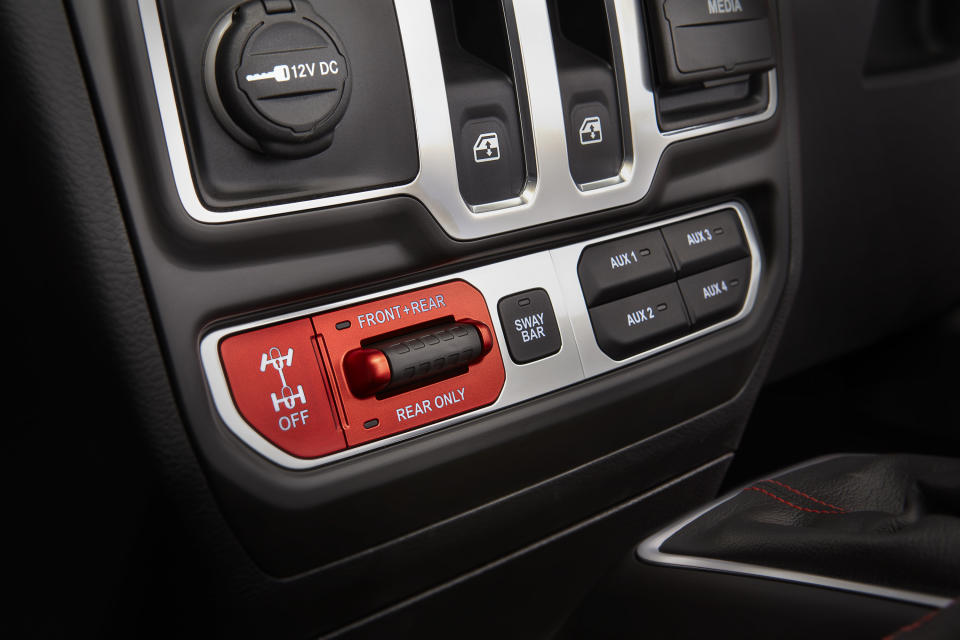
Rubicon models get Dana 44 axles front and rear with 4.10 gearing, and a Rock-Trac transfer case with 4:1 low-range gearing and Tru-Lok electronic locking differentials. The differential lockers are actuated by a redesigned switch: Push down to lock the rear differential, up to lock rear and front; a separate unlock button disengages whichever lockers are engaged. Rubicon models also offer an electronic-disconnect front sway bar.
Chassis Engineering
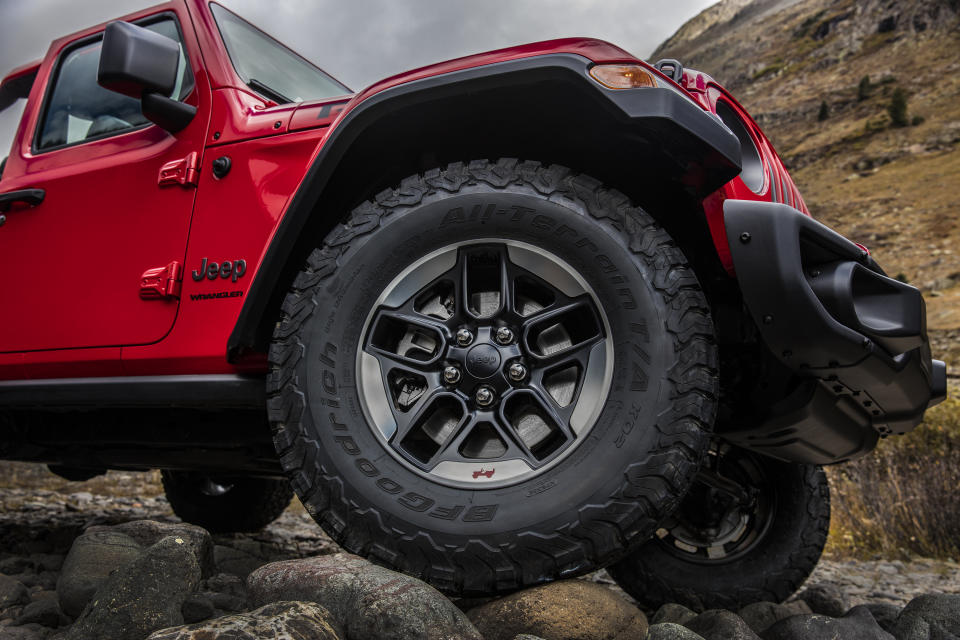
The Wrangler stays true to its heritage: A ladder frame, solid axles front and rear, and removable doors and roof. That's not to say it's old-fashioned. The five-link front and rear suspension has been vastly improved for better on-road comfort, while still offering maximum flexibility off-road. The steering has finally been upgraded from recirculating-ball to rack-and-pinion, with electro-hydraulic assist. Brake discs are 12.9 inches front and rear.
Depending on Sport, Sahara or Rubicon spec, and two- or four-door layout, approach angles range from 41.4 to 44 degrees; breakover between 20.3 and 27.8 degrees; departure between 35.9 and 37 degrees. Sport models offer 9.7 inches of ground clearance; Rubicons offer 10.8. Curb weight ranges from 3955 (for a two-door V6 Sport model) to 4485 (for a four-door Rubicon with the 2.0-liter turbo engine). The four-cylinder is 55 lbs heavier than the V6; the automatic transmission weighs 15 lbs less than the manual.
Electronics and Safety
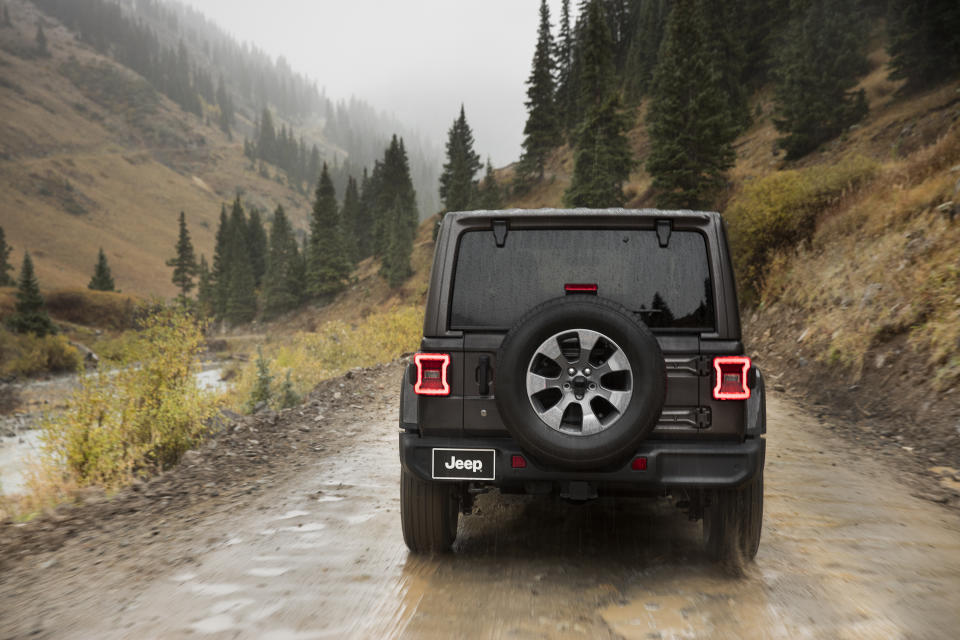
The JL-generation Wrangler offers safety and comfort items never before available on Jeep's open-top 4x4. A new rear-view camera peers through the hub hole of the spare tire; Jeep engineers assure me that no amount of clumsy handling of the spare will damage the camera. On high-end models, blind-spot monitoring and rear cross path detection hardware is hidden in the taillights. The 7- and 8.4-inch UConnect systems offer Apple CarPlay and Android Auto. The dashboard has a dedicated Off-Road page, which shows pitch and yaw angles, steering angle, and the status of the differential lockers.
Nifty Details
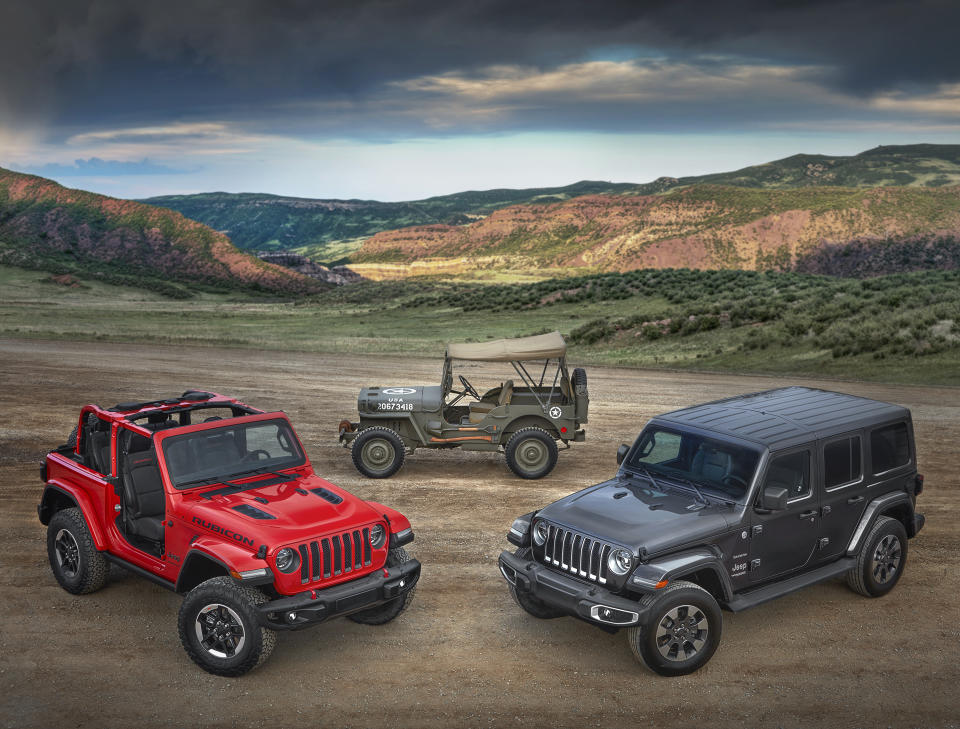
The Wrangler is one of those vehicles that has always been chock-full of neat-o little details, things that show you that the engineers really paid attention to how people use their off-road rigs. The new 2018 Wrangler is no different.
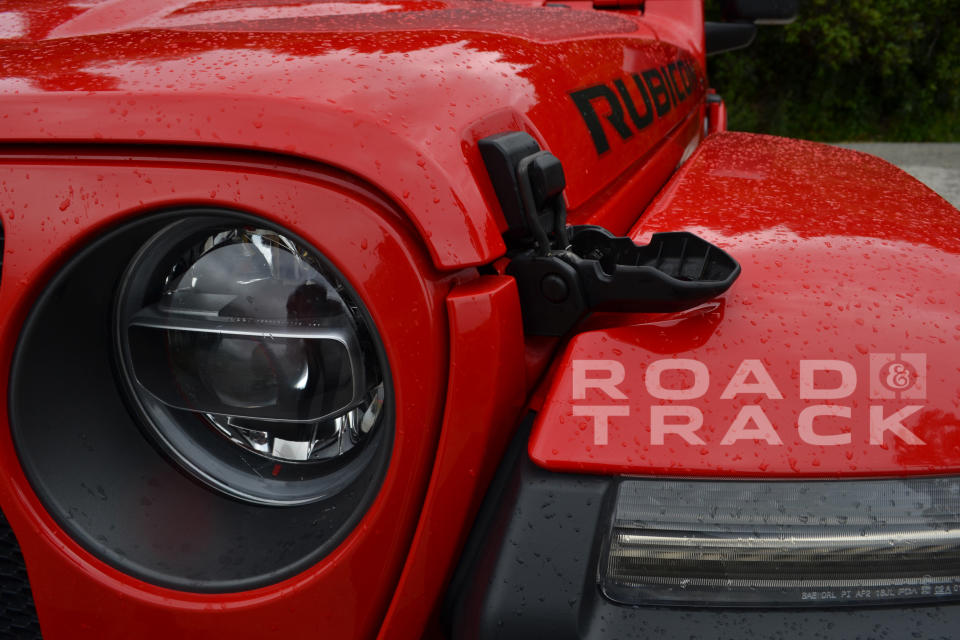
Pop open the hood latches, and you'll see a notch - it's there to hold your winch cable at the ready when you're off-roading. The backs of the front seats have nylon strapping in a grid pattern. Military veterans and tactical gear nuts will recognize it as MOLLE, a standardized attachment system that lets you add on storage bags or other pieces of equipment by weaving their straps through the grid.
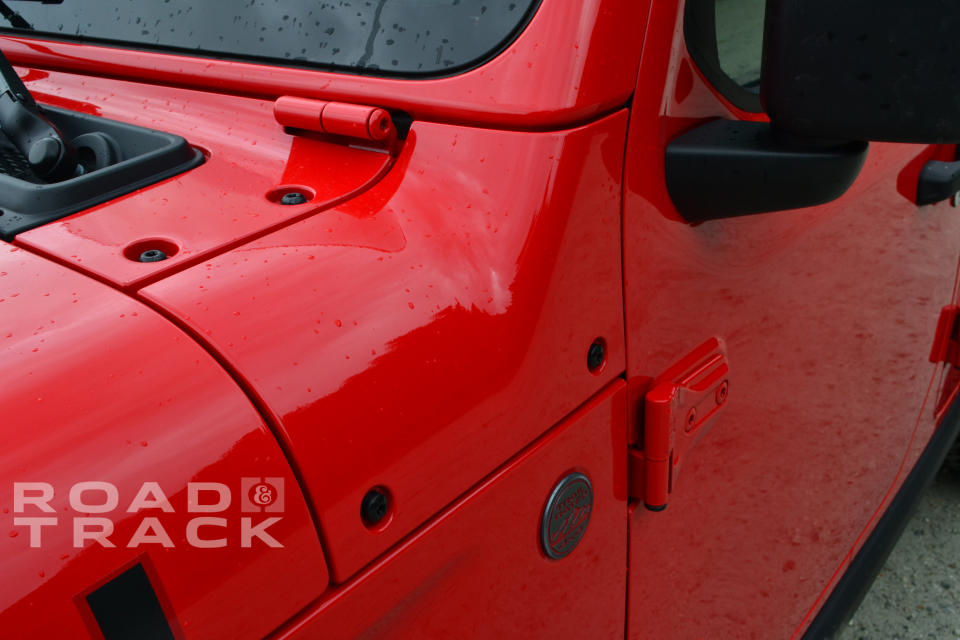
At the base of the windshield, where the cowl curves down to meet the fender, there are four bolts on either side. From the factory, they don't serve a purpose, but Jeep added them to provide a threaded mounting point on either side of the body. You can bet the aftermarket will find hundreds of things to attach to these handy points.
The pop-off doors? Their hinges are stamped T50 to remind you what size Torx bit you'll need to disassemble them. The hinge pins are staggered sizes, so you don't have to perfectly align the door in order for it to slide into place. The more you play around with the Wrangler, the more friendly features like this you find.
Final Thoughts
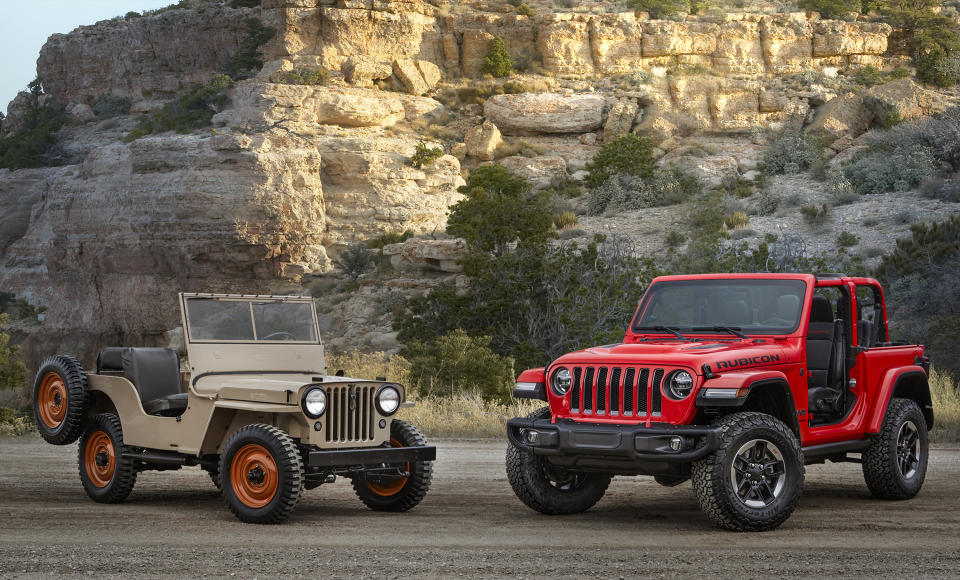
You might be tempted to think Jeep is playing it safe with the new Wrangler. Its design, layout and basic features are all deeply familiar to anyone with even a passing knowledge of the 4x4.
But that's missing the point. Jeep has spent more than 75 years perfecting this recipe - starting with the original Willys, the truck that won World War II, and morphing it into a modern-day vehicle that can still trace it roots back to that rugged machine. The basics are still the same: Solid axles front and rear, a folding roof and a flip-down windshield. At this point, it would be foolish to mess with success.
The 2018 Jeep Wrangler hits dealerships in January. In the next few weeks, we'll have a full review of what it's like to drive. Until then, enjoy hundreds of photos of the all-new, JL-generation Jeep Wrangler.
You Might Also Like

